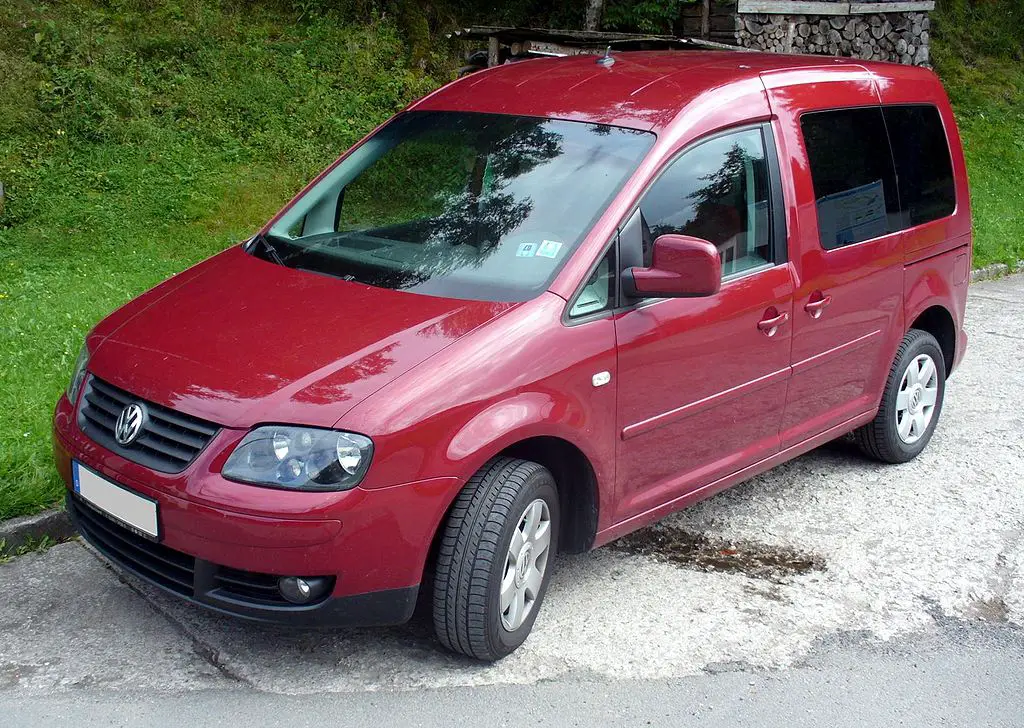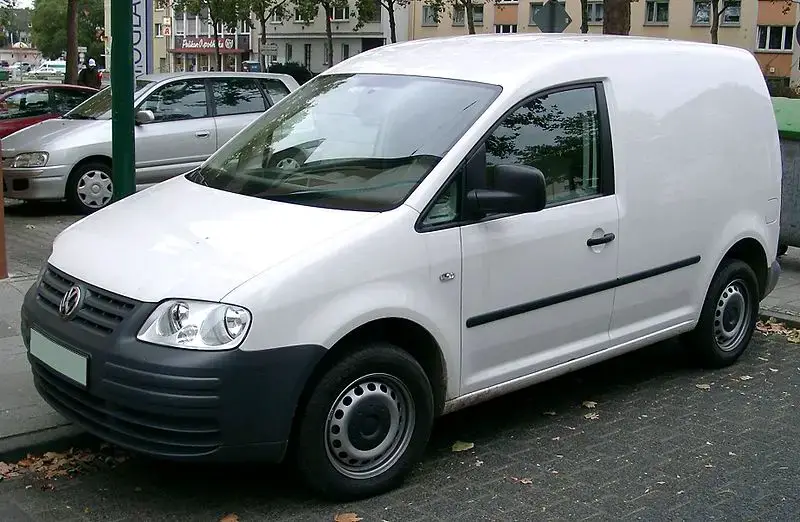Review : VW Caddy III ( 2004 – 2010 )

VW Caddy III, one of the most popular small vans in the compact class, comes and carries its dignity in the septic tank knows as Almost Car Reviews. Why does the VW Caddy III demand an above average used car price, find out in today’s article.
For starters, you need to know exactly what are your needs and why you should buy a Mk 3 Caddy?
- First of all, you buy a Caddy III because you didn’t have the money for Caddy IV or Caddy V.
- Secondly, Caddy has always been somewhere in the middle of the center. It is bigger than a Fiesta van, it comes with bigger engines than the Fiat Doblo but it is not as big or expensive as a Transporter. Basically, you are in the middle of the center, too rich for a Doblo and but too poor for a Transporter.
- Most parts are stolen from VW Golf V and Golf VI so you can find parts everywhere, even from scrapyards. This means that most of the problems are also carried on from Golf V and Golf VI. It’s just that you have fewer problems here because you have less technology, Caddy being a work car, not a promenade chariot.
- And now comes the party piece for which Caddy III is worth your money: It’s one of the few vans in this class that comes with rear leaf suspension. That means a maximum load capacity of up to 830 kg, about 100 kg more than a Touareg 7P 3.0 TDI 240 horsepower automatic. Yes, I compare a commercial car to a normal one, but a VW Caddy III fits in a door compartment of a Touareg 7P. Also, most of it’s rivals such as the Doblo or the Combo C stop at 750 kg so you got an 80 kg advantage over them, however the Combo C has more space as it is the only that can fit an europallet.
- Besides, VW is in 2010 for the commercial area what was in 2000 for the passenger area, from the time of the late Golf IV. Simple cars, poor in features, expensive in price but slightly more reliable than the competition. VW Caddy III – the Polo shirt of the middle class vans. It’s neither the last word nor the bottom of the barrel. You don’t embarass yourself wearing a polo shirt, but women won’t throw their underwear at you either if you wear a polo shirt.

VW Caddy III Engines
Petrol
- 1.4 MPI of 75 and 80 horsepower – For this version of Caddy, the maximum carry capacity is 37 kilograms, as it can barely move itself with this microscopic ammount of power. Yes, it is somewhat reliable, but if you strain it too much you will have issues with the flow meter, cylinder heads, cylinders and auxiliary belt. In that order.
- 1.6 MPI of 102 horsepower – The classic 1.6 MPI launched in 488 on the Golf IV and Octavia I, this engine is the only one that makes any sense for the urban Caddy driver. Whether you went for a Caddy Life (van with windows) or the vanilla Caddy (van without windows), the 1.6 MPI is for you. Occasionally it eats oil and coilpacks, but it’s essentially a Nokia 3310 in a smartphone world.
Diesel
- 1.6 TDI of 75 and 102 horsepower – The most popular engine among the fleet vans, this engine enjoys cheap taxes and insurance and decent consumption, but suffers on the side of injectors, EGR, particulate filter and dual-mass flywheel. Personally, I would stay away from this engine.
- 1.9 TDI of 75 and 105 horsepower – The classic 1.9 TDI carries on its agricultural torch and does its job wonderfully. Coming with a single mass flywheel and a longevity worthy of Betty White, this workhorse still does its job out on the streets and highways of Europe.
- 2.0 SDI of 69 horsepower – You’d think 69 horsepower is fun, and you’d be wrong. However, this is the perfect workhorse. Acceleration is measured by calendar and it really struggles when it comes to carrying heavy loads, but at least it has a legendary reliability.
- 2.0 TDI of 110 and 140 horsepower – Unfortunately the old 1.9 TDI got retired by European emissions standards and was sent off to the pages of history, so VW brought to light the 2.0 TDI and that’s how it arrived under the bonnet of the Caddy. I talked in more detail about this engine in the article about the Passat B6, and if you ask me about the Caddy I personally recommend the 110horsepower version.

VW Caddy III General Issues
- As I said, many parts are sourced from the VW group so many problems are taken from the VW group. We start with the G201 ABS sensor that filled the repair shops with Golfs, Tourans, Leons, Sharans and so on.
- Pay attention to the condition of the car but especially pay attention to equipment level. VW is famous for having always made cars as equipped as Keira Knightley, so make an effort and buy one that has at least air conditioning.
- This one is for the rich but the physically weak men or women who have chosen to buy an VW Caddy III with DSG, I tell you that you must be very careful about maintenance. Every 60,000 kms the oil and the filter must be changed, and every 3 months you must light a candle at the church so that the Mechatronic error does not light up.
- I go back to the exceptional quality of the cars on sale today and the way they were maintained and I recommend checking the whole car for rust, even in places where you could not imagine that there could be rust. Check because even the plastics rust.

VW Caddy III Verdict
Not-really-Doblo-not-quite-Transporter. And so you go and buy a Caddy and you’re off to work, regardless of the engine you choose (except the 1.4 petrol). However, you have to go through alot of overpriced deals on the second-hand market, which can sometimes be downright insulting. “And why are you complaining about the price anyway?” This van is gonna make ya profit after buying it, you know ”. If the purchase price hadn’t mattered to me, I wouldn’t have been looking at a 2005 Caddy in the first place.
Which engines do I recommend? For petrol the only realistic choice is the 102 horsepower 1.6 MPI. As for diesel, I recommend the classic, the eternal 1.9 TDI with 105 horsepower. And if the city where you live demands Euro 5 cars only, then I recommend the 2.0 TDI 110 horsepower unit.
Similar Articles

Review : Skoda CitiGO ( 2011 - 2020 )

Review : Seat Mii ( 2011 - 2020 )

Review : VW Up! ( 2011 - 2023 )
Write an answer
- Review : Skoda CitiGO ( 2011 - 2020 ) 02 August 2025
- Review : Seat Mii ( 2011 - 2020 ) 02 August 2025
- Review : VW Up! ( 2011 - 2023 ) 16 July 2025
- November 2025
- October 2025
- August 2025
- July 2025
- April 2025
- March 2025
- February 2025
- January 2025
- December 2024
- November 2024
- October 2024
- August 2024
- July 2024
- June 2024
- May 2024
- April 2024
- March 2024
- February 2024
- January 2024
- December 2023
- November 2023
- October 2023
- September 2023
- August 2023
- July 2023
- June 2023
- May 2023
- April 2023
- March 2023
- February 2023
- January 2023
- December 2022
- November 2022
- October 2022
- September 2022
- August 2022
- July 2022
- June 2022
- May 2022
- March 2022
- April 2021
- January 2021
- December 2020
- November 2020
- October 2020
- September 2020
- August 2020
- July 2020
- March 2020